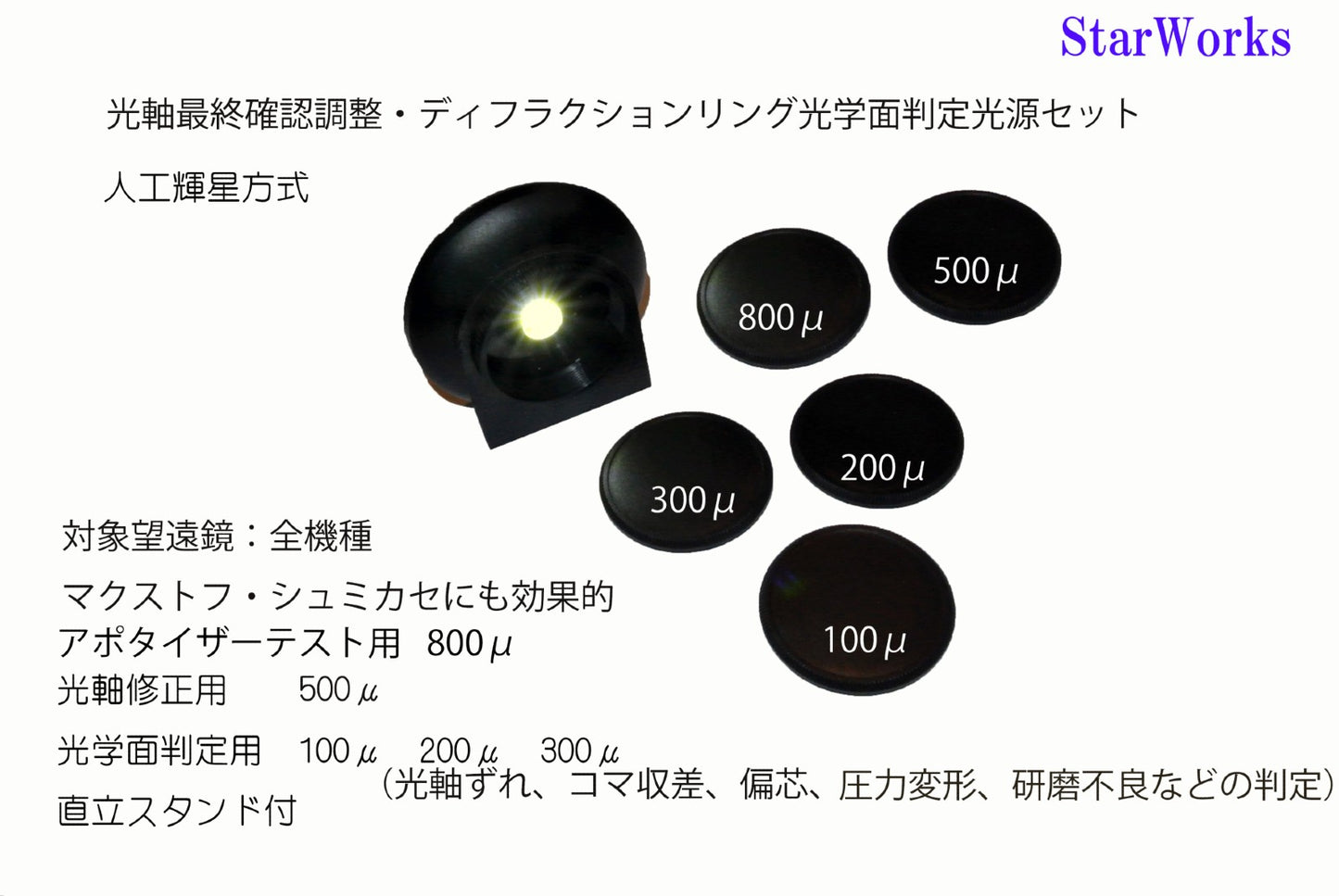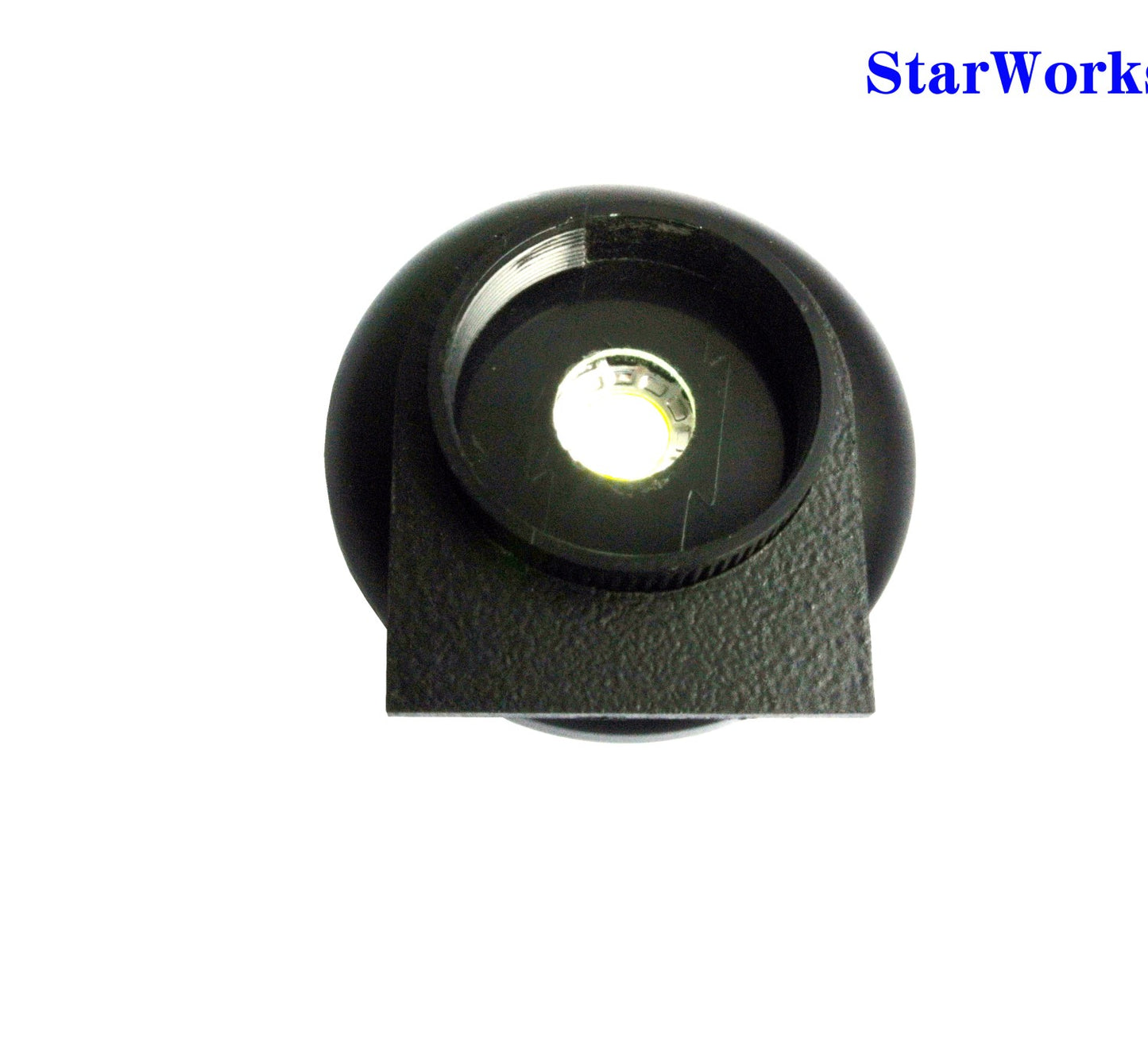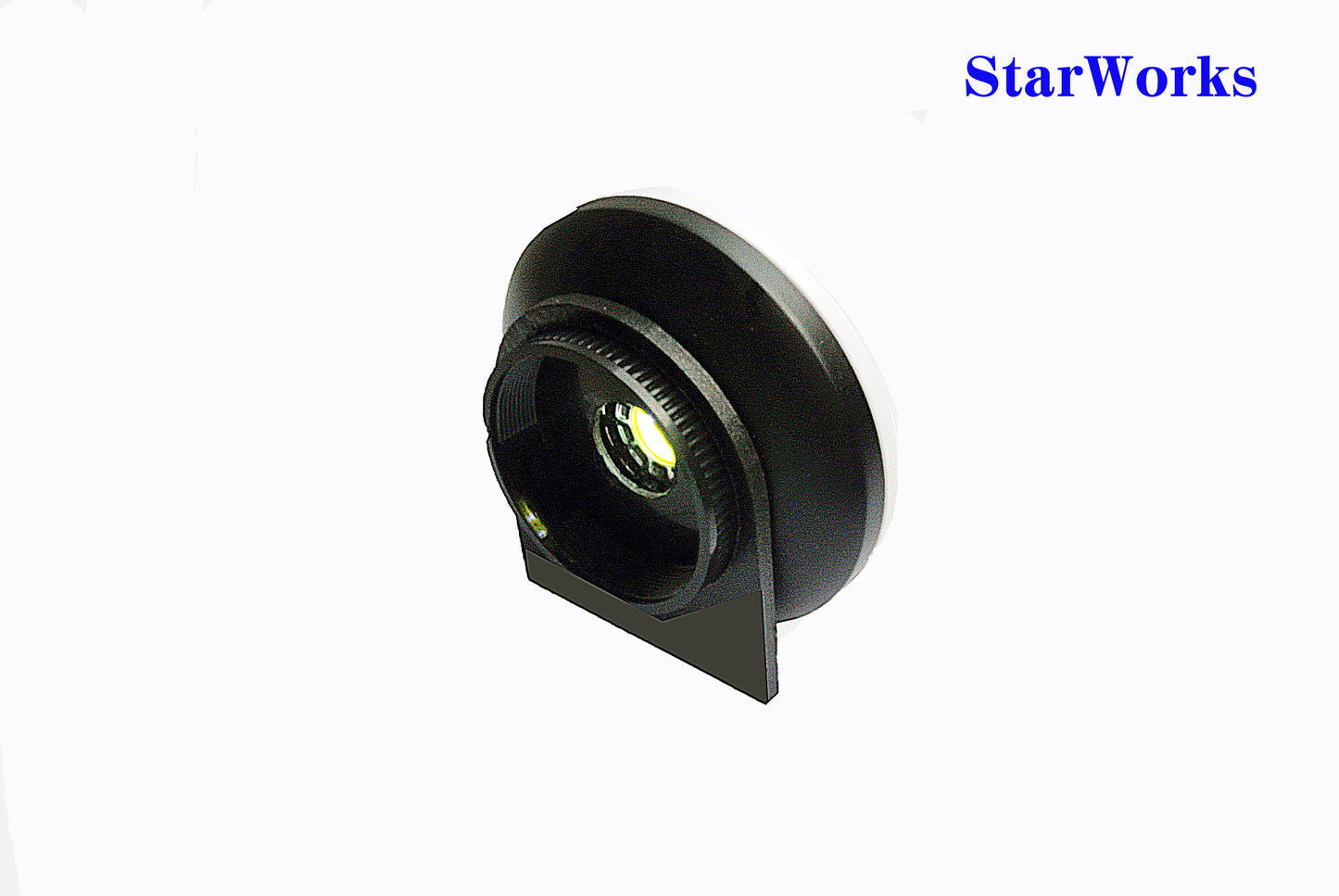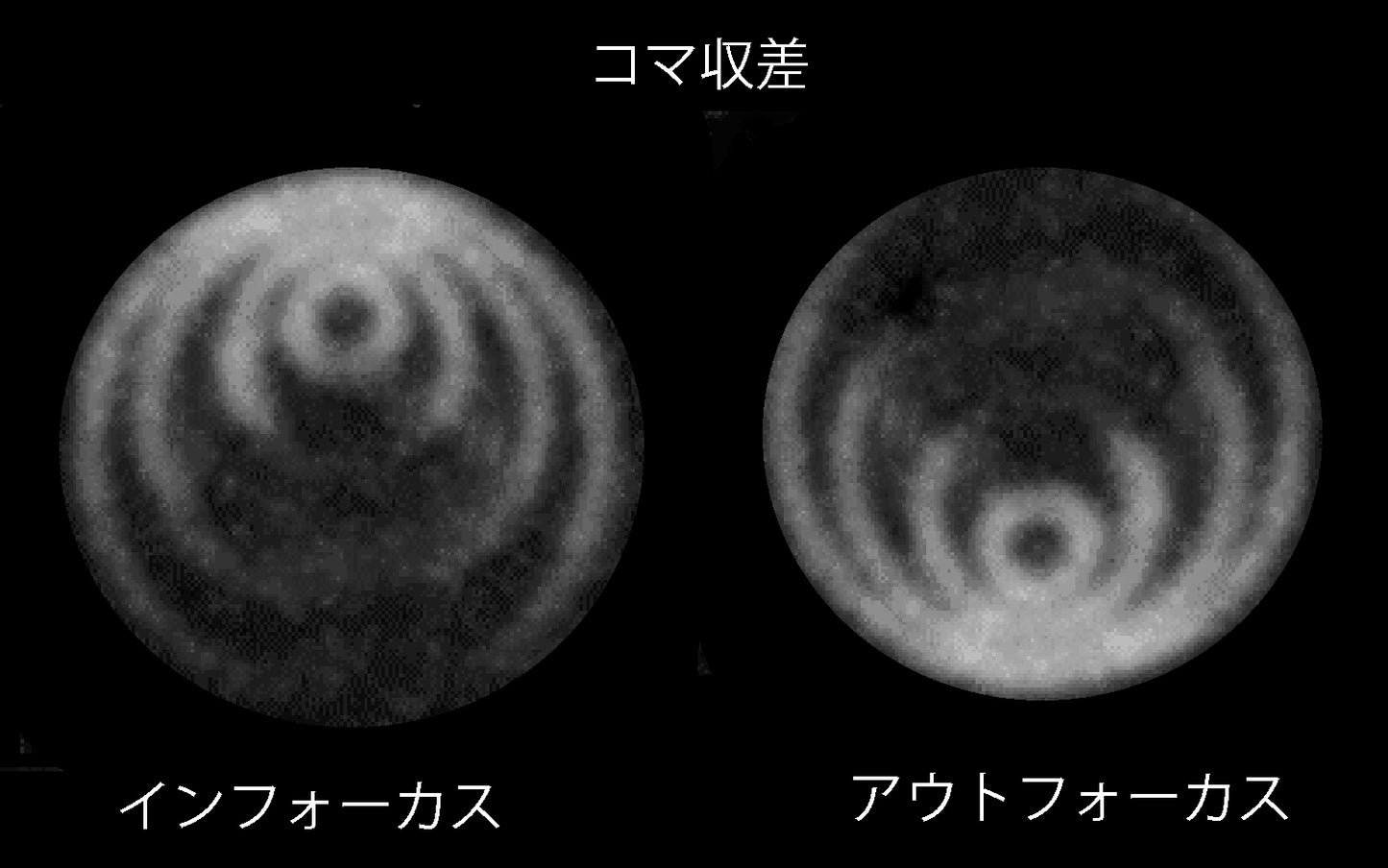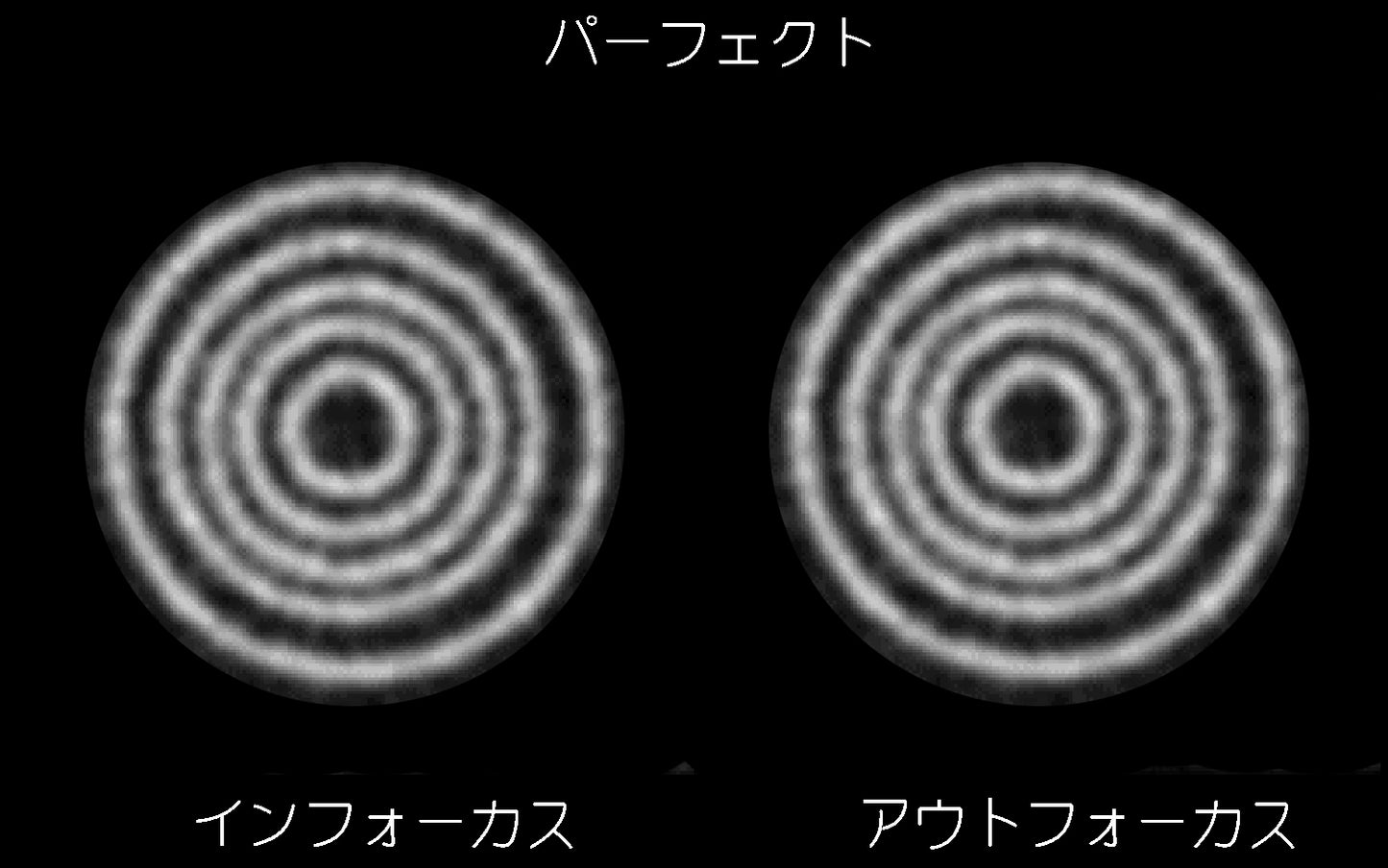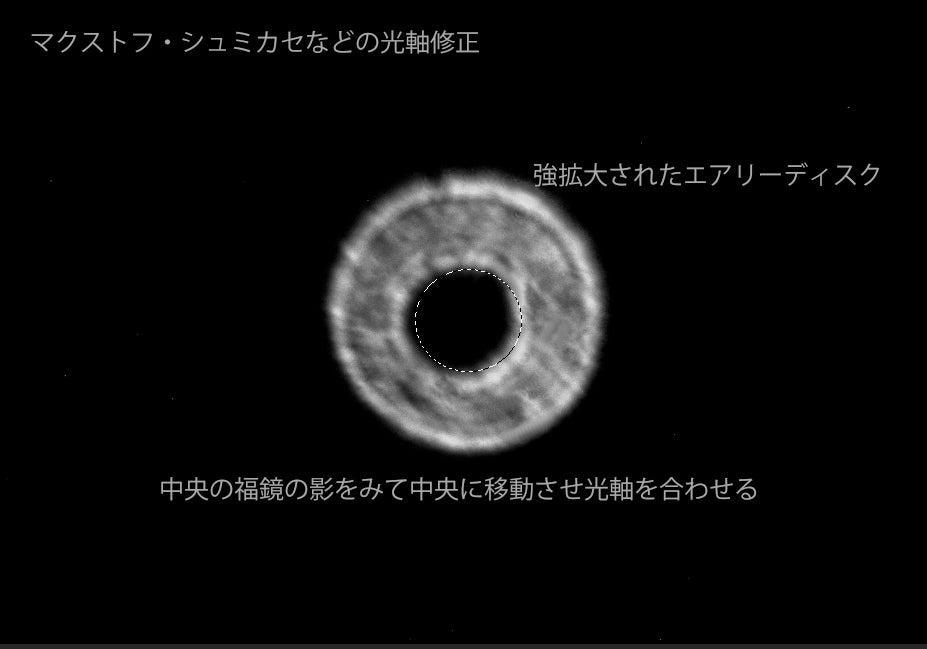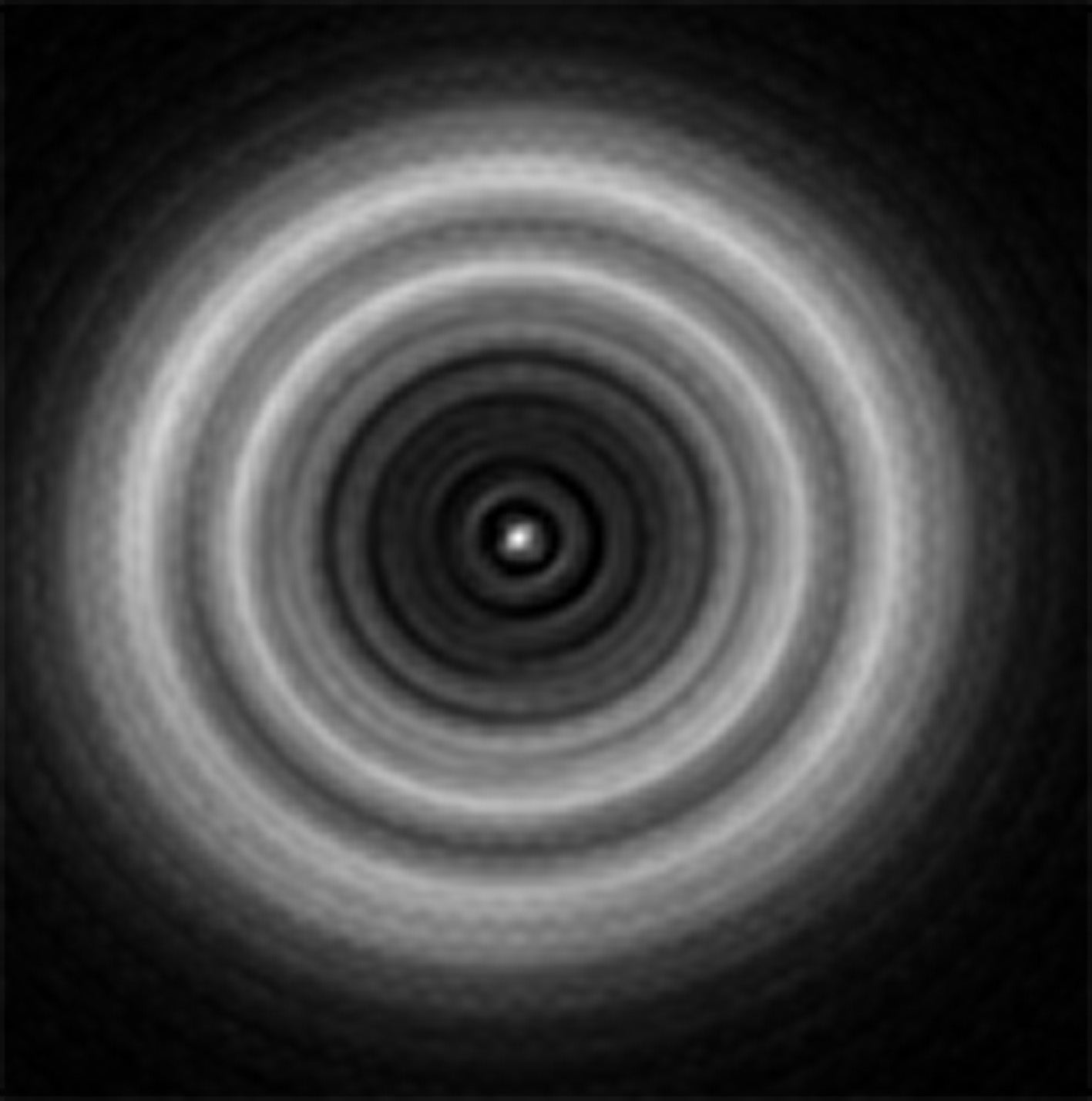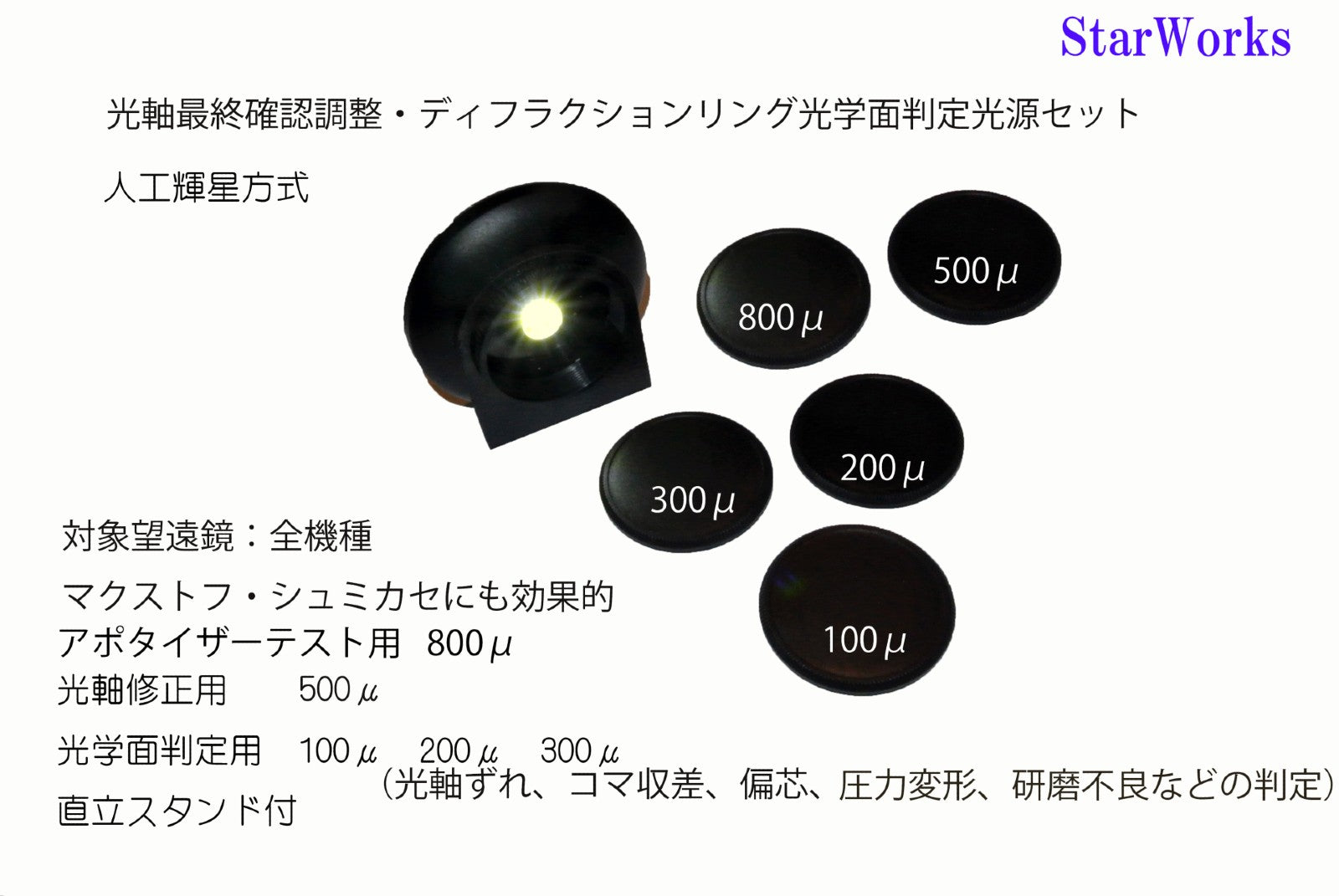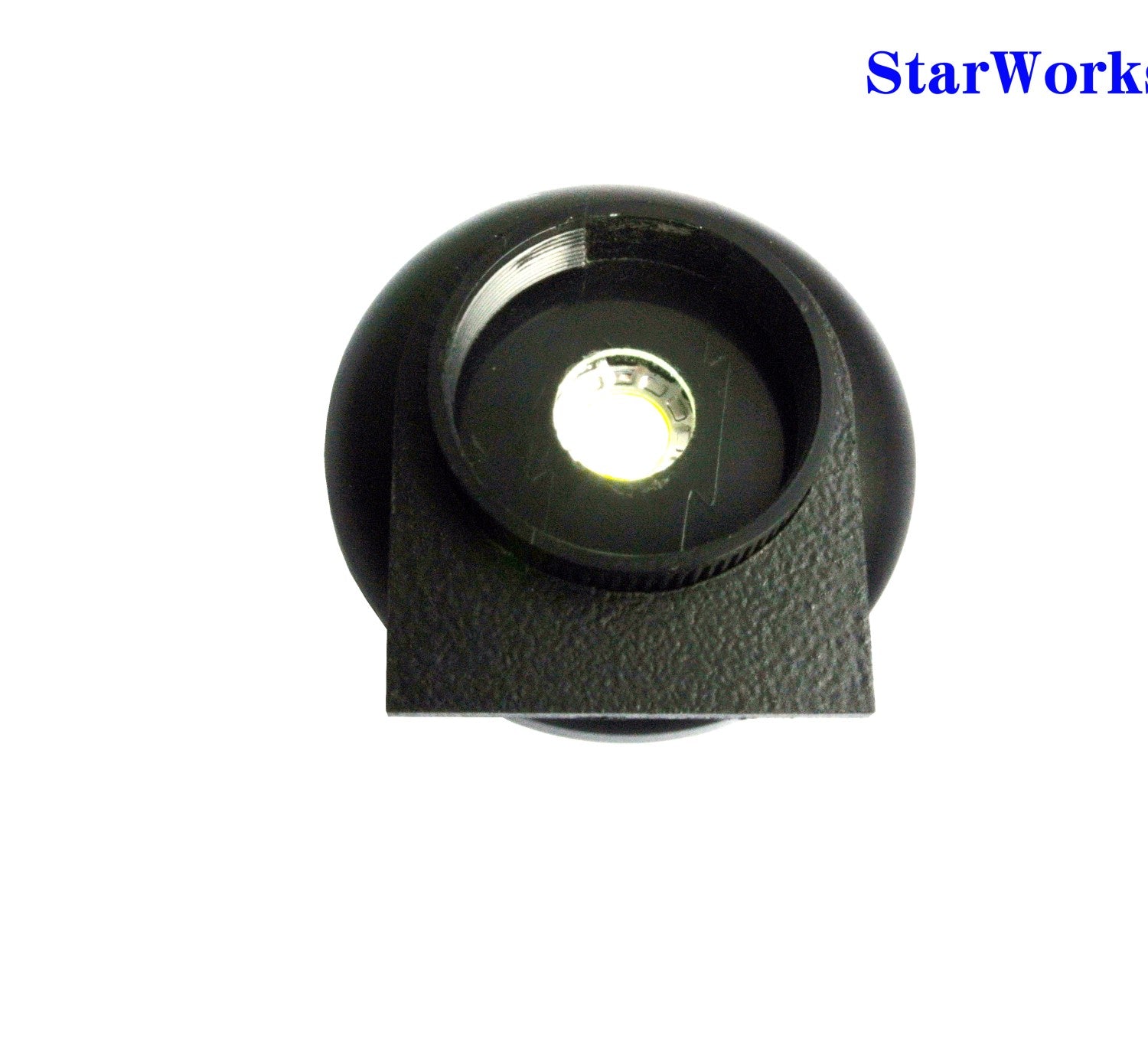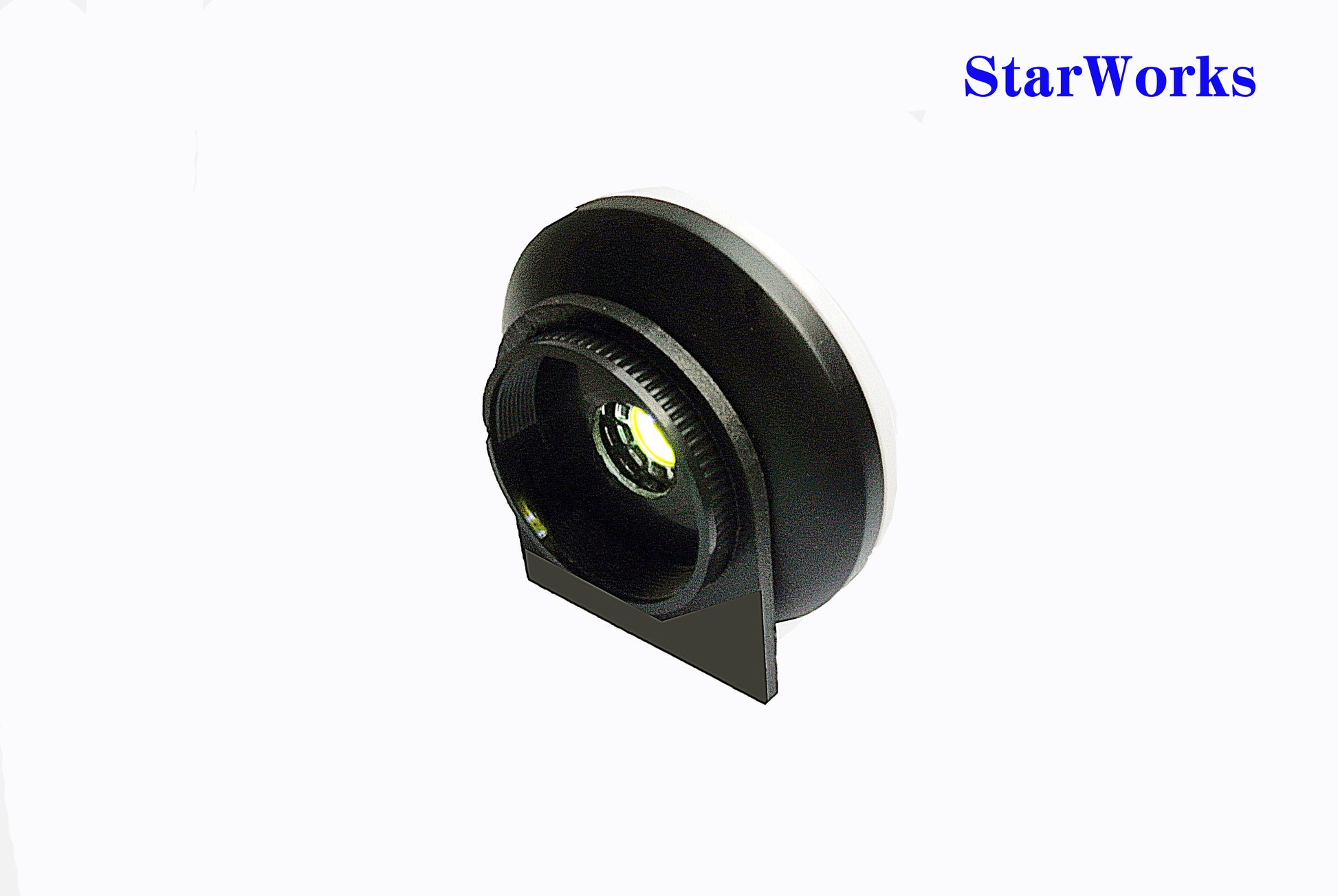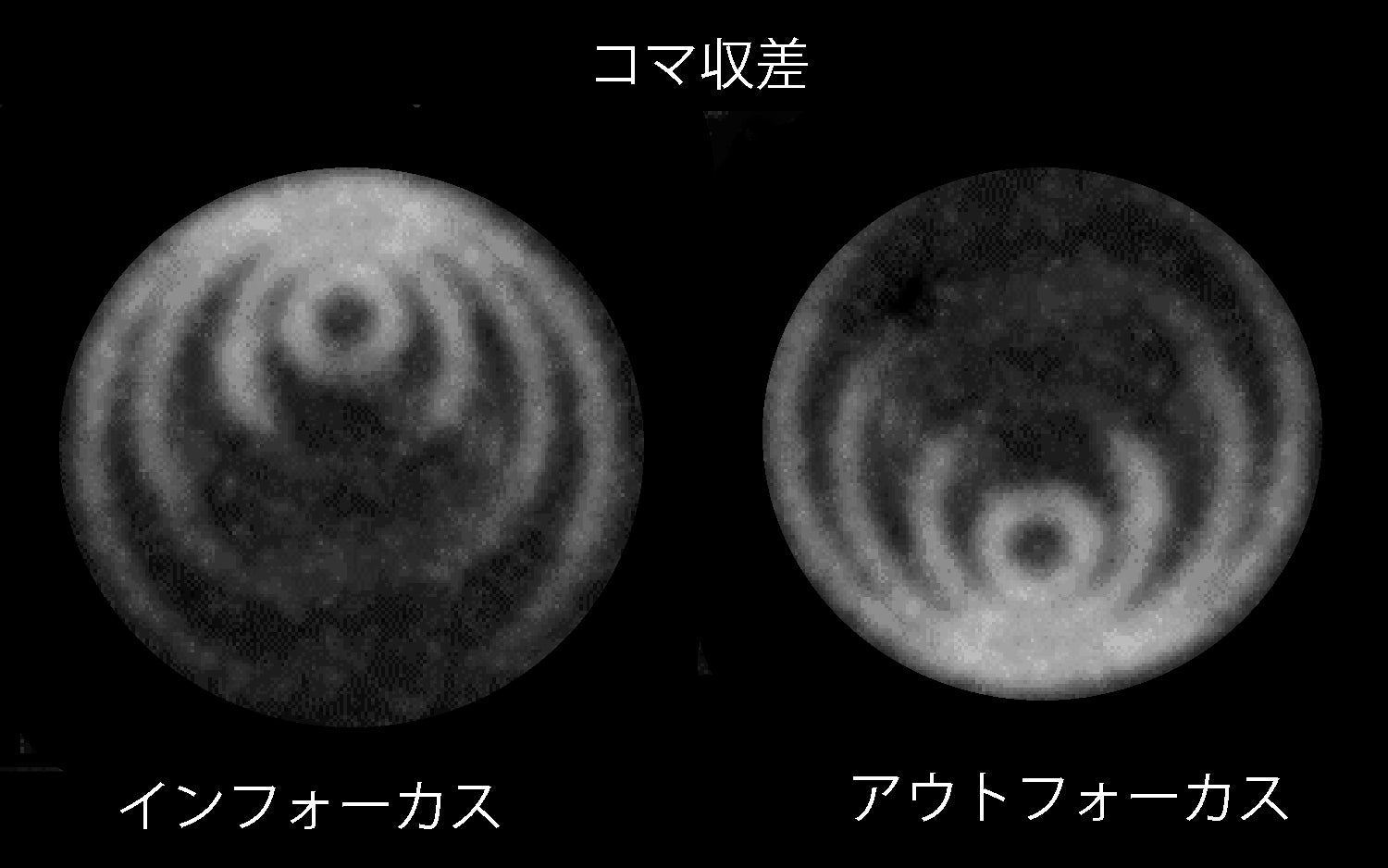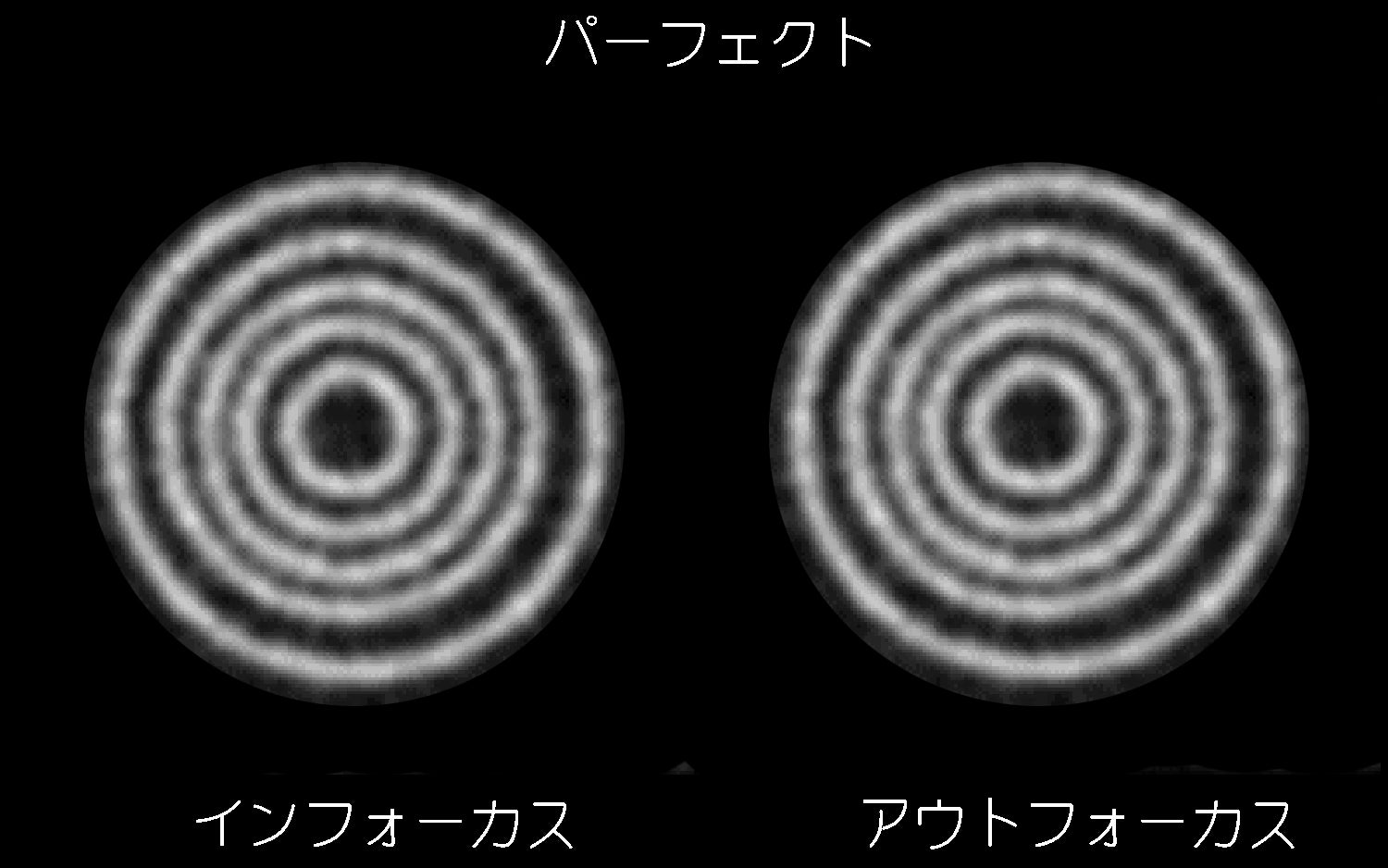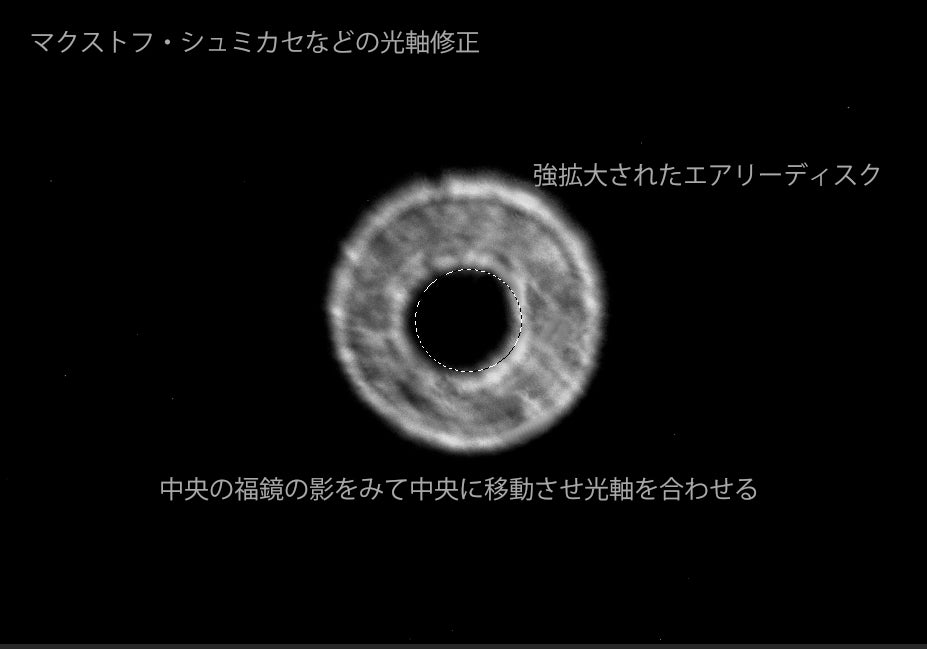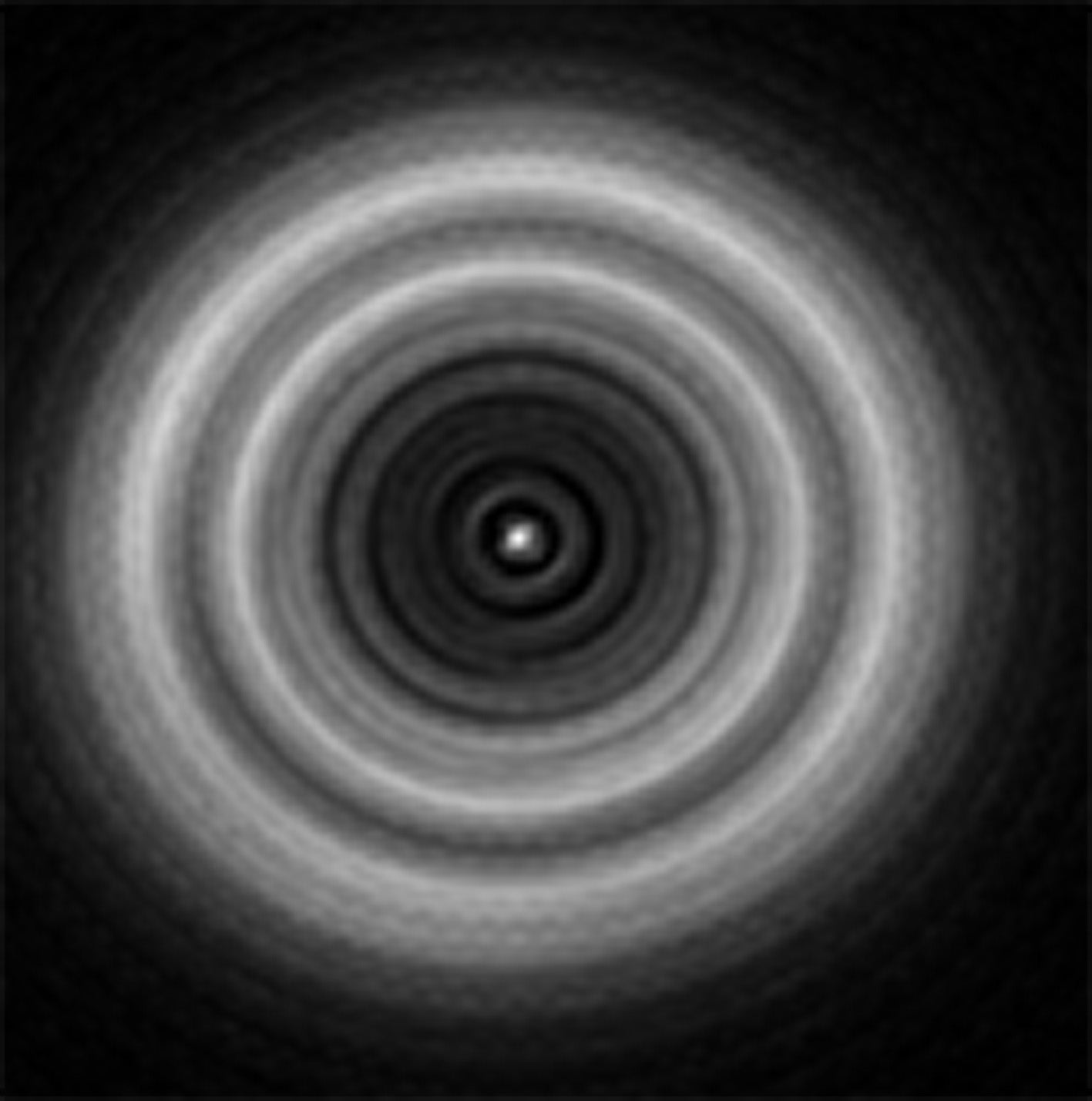StarWorks
Star Tester A light source for adjusting the optical axis of an astronomical telescope and determining the defraction ring
Star Tester A light source for adjusting the optical axis of an astronomical telescope and determining the defraction ring
Couldn't load pickup availability
This is StarWorks' original artificial star image tester.
It is a convenient item to own because it allows you to test with an artificial light source instead of an actual star for easy and accurate determination. It is also useful for verifying the effectiveness of binary holographic adaptors and for determining the optical performance of objective lenses and reflectors, as well as for final optical axis adjustment of telescopes. It is also recommended for optical axis adjustment of Maksutov and Schmikasse telescopes, and for refracting telescopes with an adjustment mechanism in the objective lens cell.
-Tester body with stand
-Five types of plates from 100 to 800μ
-Instructions
Use at a position above the minimum focal length of the telescope to be used. 5m or less may not be in focus. All astronomical telescopes For precision optical axis correction of closed system telescopes such as Maxthoff-Schmikasse, etc. Also for checking optical axis accuracy of telescopes and spike analysis of reflecting telescopes.
For performance and accuracy analysis of objective lenses and mirrors
800µ Plate (for spider testing of reflective telescopes)
Can be used to test binary hologram apotizers. It can also be used to test homemade masks, etc. A larger 800μ hole is used to make the effect easier to understand.
500μ Plate (for precision optical axis adjustment)
This 500μ plate can be used for optical axis correction even in bright light. It can be used in a fixed position and is free from the effects of seeing, enabling reliable optical-axis correction. When the star (airy disk) becomes larger after focusing and then shifting the focus, the shadow of the secondary mirror should be in the middle of the star. Adjust the optical axis so that the shadow of the central shielding (secondary mirror) is in the perfect center of the airy disk. The diffraction does not need to be cleanly visible at this time. Enlarge the image as large as possible so that you can clearly see the deflection of the secondary mirror.
100μ-300μ Plate (to identify eccentricity, coma, glass distortion, poor polishing, etc. of the objective lens and mirror)
Reproduces the defraction ring when looking at an actual star. The ring is not affected by seeing, so it shows a delicate ring and allows you to evaluate the telescope's performance. The smaller the hole diameter, the more precise the ring will be, but for telescopes with high resolution, use the smallest hole possible. (Reference aperture: 200mm or larger, 100μ; aperture: 100mm or larger, 200μ; aperture: 100mm or smaller, 300μ) Use the telescope with the room lighting dimmed as much as possible.
Once in focus, shift the focus to the in-focus and out-of-focus side and compare the results, concentric rings will appear. The rings are the same in front of and behind the focus but inverted, so you can see distortions of the mirror surface and the coma. Ideally, in good quality optics, the front and back should be the same. If there are defective elements, the rings will be partially deformed, missing rings, biased deformation (cores), or other ring distortions, such as rings disappearing behind while visible in front.
(1) If the objective has an eccentricity, the circle distortion is reversed in the front and back.
(2) If the spherical surface of the objective is overcorrected, the brightness of the outside and inside of the ring is reversed at the front and rear.
(3) If the optical axis is misaligned, the ring will not be a perfect circle at the front and rear.
(4) If the ring is not concentric and deformed even if the optical axis is aligned, it is due to defective polishing of the objective, eccentricity, veining of the optical glass, coma aberration, etc. (5) If the number of ring lines is too large and clearly visible, the brightness is not correct.
(5) The more ring lines are clearly visible, the higher the precision of the objective.
(6) In an ideal optical system, all circles are concentric, whether in-focus or out-of-focus.
Ideally, the ring should be a perfect circle in and out of focus and both rings should look the same. If the ring images before and after focus are different, spherical aberration can generally be judged to be present.
